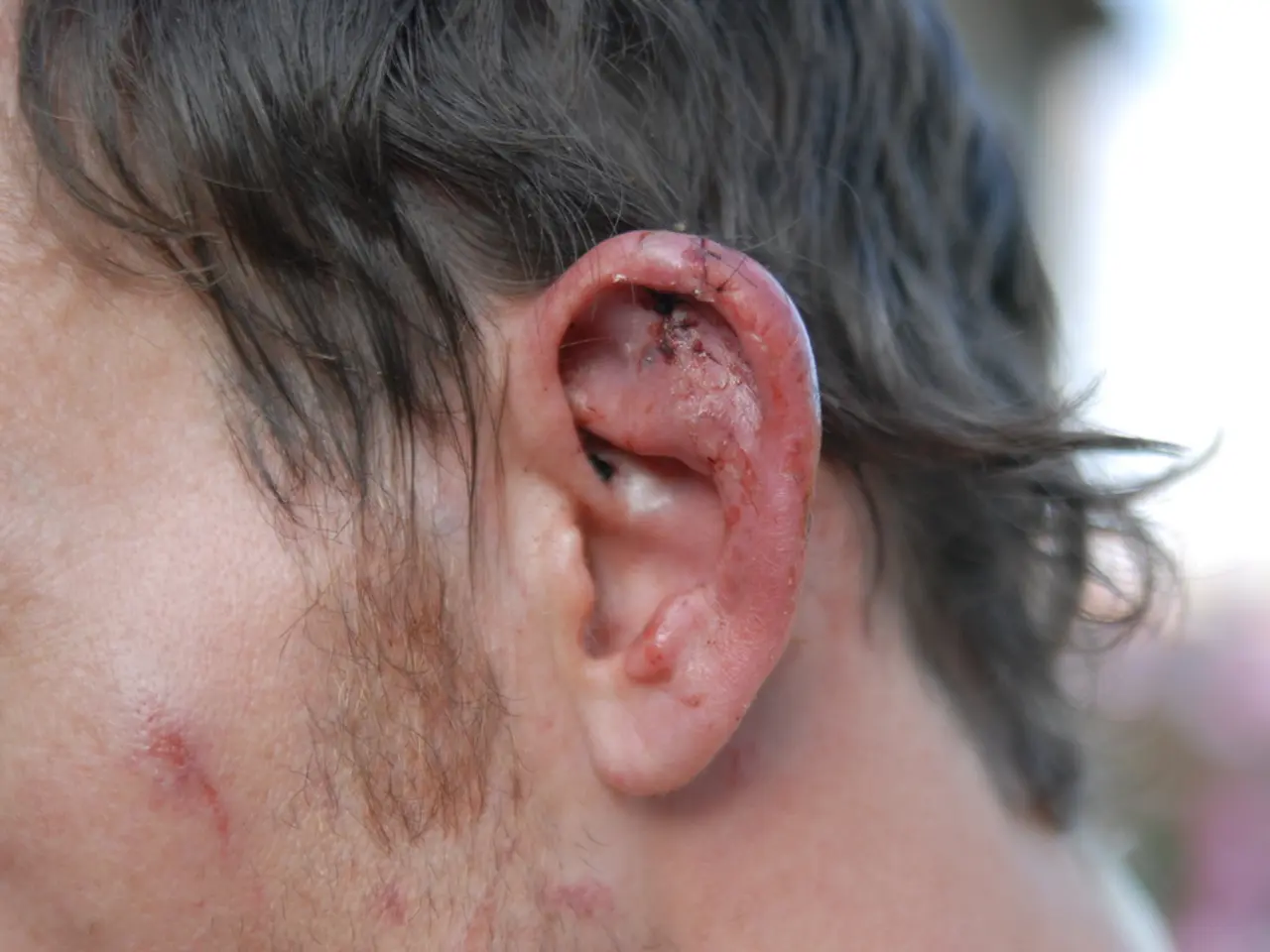Signs and Progression of Blood Clots Detailed
In our bodies, blood clots can form unexpectedly and, if left untreated, can lead to serious health complications. It's essential to understand the early symptoms of blood clots in various parts of the body to seek immediate medical attention and prevent potentially life-threatening situations.
When a blood clot forms in the lungs (pulmonary embolism), symptoms may include sudden chest pain, sharp or stabbing, worsening with deep breathing; shortness of breath; rapid breathing; and sometimes coughing up blood.
In the legs (Deep Vein Thrombosis, or DVT), early warning signs include sharp, throbbing pain, usually in one leg (calf or thigh), swelling, redness, warmth around the painful area, hardened veins, and sometimes bluish or purplish skin discoloration. The pain may worsen when flexing the foot or standing/walking.
A blood clot in the brain (stroke or cerebral ischemia) can cause severe sudden headache, sudden weakness or numbness (particularly on one side of the body), difficulty speaking or understanding speech, confusion, sudden vision changes, loss of balance or coordination, and facial drooping.
A blood clot in the heart can lead to a heart attack, with symptoms such as chest pain or pressure (angina), pain radiating to the neck, jaw, shoulder, or arm, shortness of breath especially during exertion, sweating without exertion, nausea, vomiting, and fatigue. Some may experience a faster than normal heartbeat.
Though less commonly described, blood clots in the kidneys can cause sudden flank or back pain, difficulty urinating, or signs of acute kidney impairment due to blood flow blockage.
Blood clots in the neck can lead to swelling of the face, neck, or arm; pain or difficulty swallowing; hoarseness; and difficulty breathing due to vein or arterial blockage.
Recognizing these early symptoms and seeking immediate medical care is crucial to prevent serious complications. Conditions like muscle strain, cellulitis, and Baker's cysts can mimic the symptoms of a blood clot, so it's essential to err on the side of caution and consult a healthcare professional if you experience any unusual symptoms.
Blood clots can occur anywhere in the body, including the legs, lungs, and brain. A blood clot in the neck, also known as carotid artery thrombosis, can lead to stroke, heart attack, or death. Symptoms of renal artery thrombosis can include flank or abdominal pain, hematuria (blood in the urine), fever, nausea, and vomiting.
A blood clot in the brain is called an ischemic stroke, and around 87% of strokes are ischemic strokes. Early symptoms of carotid artery thrombosis include weakness or numbness on one side of the body, sudden difficulty speaking or understanding speech, vision issues, sudden severe headache, and seizures. A stroke is a medical emergency, and anyone experiencing symptoms of a stroke should seek immediate medical attention.
The outlook for individuals with blood clots depends on various factors, including the size, location, and promptness of treatment. Early symptoms of a blood clot can include pain, swelling, warmth, tenderness, shortness of breath, chest pain, coughing up blood, rapid heartbeat, feeling lightheaded or dizzy, sweating, crepitus (a crackling or popping sensation in the affected area), sudden numbness or weakness in the face, arm, or leg, confusion or trouble speaking, difficulty seeing in one or both eyes, sudden severe headache, dizziness or loss of balance, difficulty walking or coordinating movements, nausea, and lightheadedness.
Venous thromboembolism (VTE) affects as many as 900,000 people in the United States each year, and it occurs when a person has DVT and PE. It is important to learn how to recognize the symptoms of a stroke. Small blood clots in the veins of the legs typically respond well to treatment with blood thinners and compression stockings.
In conclusion, understanding the early signs of blood clots and seeking immediate medical attention is crucial in preventing serious health complications. By recognizing the symptoms and seeking help promptly, individuals can improve their chances of recovery and maintain their overall health and well-being.
A heart attack can occur due to a blood clot in the heart, causing symptoms such as chest pain or pressure, pain radiating to the neck, jaw, shoulder, or arm, shortness of breath, sweating without exertion, nausea, vomiting, and fatigue.
The science behind Paxlovid, a COVID-19 treatment, suggests it may reduce the risk of hospitalization and death in patients with mild to moderate COVID-19 and at least one risk factor for progression to severe disease or hospitalization; however, its effects on blood clot formation are not well-studied, particularly in the context of chronic diseases and medical-conditions like cardiovascular health, mental health, and fitness-and-exercise.
Medical-conditions and chronic diseases can increase the risk of blood clots, making it crucial to prioritize health-and-wellness practices like regular exercise, stress management, and a balanced diet.
Retargeting a health awareness campaign to individuals with a history of blood clots or those at high risk of developing blood clots, such as individuals with chronic diseases, can help increase awareness of the early symptoms of blood clots and encourage prompt medical intervention.
A stroke is a medical emergency that can occur due to a blood clot in the brain; understanding its early symptoms, like sudden weakness or numbness on one side of the body, sudden difficulty speaking or understanding speech, vision issues, sudden severe headache, and seizures, can help save lives.
Blood clots in various medical-conditions, such as DVT, PE, carotid artery thrombosis, renal artery thrombosis, and ischemic stroke, can be life-threatening if left untreated, making it vital to seek immediate medical attention at the first sign of symptoms.




